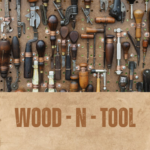
Mastering safety and tool knowledge in woodworking is of utmost importance to ensure a safe and productive woodworking environment. Here are some effective ways to enhance your safety awareness and tool knowledge:
1. Educate Yourself: Start by familiarizing yourself with woodworking safety principles and practices. Read books, articles, and safety guidelines from reputable sources. Understand potential hazards associated with woodworking tools and machinery, as well as proper safety protocols for their use.
2. Take Safety Training: Consider attending safety training courses or workshops specifically tailored for woodworking. These courses often cover topics such as tool safety, proper handling, personal protective equipment (PPE), and emergency protocols. Learning from experienced instructors can significantly enhance your safety knowledge and awareness.
3. Know Your Tools: Thoroughly familiarize yourself with the tools you use in woodworking. Read their manuals, study their features, and understand their safe operating procedures. Different tools have specific safety considerations, so be well-informed about the potential hazards and safety precautions associated with each one.
4. Use Personal Protective Equipment (PPE): Always wear appropriate personal protective equipment while woodworking. This may include safety glasses, hearing protection, dust masks or respirators, gloves, and sturdy footwear. Use PPE consistently to safeguard yourself from potential injuries or health risks.
5. Maintain Tools and Equipment: Regularly inspect and maintain your tools and equipment to ensure they are in good working condition. Keep blades sharp, replace worn-out parts, and lubricate moving components as necessary. Properly maintained tools not only enhance safety but also improve the quality of your work.
6. Establish a Safe Workspace: Set up a clean and organized workspace conducive to safe woodworking. Maintain clear pathways, declutter the area, and ensure adequate lighting. Keep fire extinguishers nearby, and have a first aid kit readily accessible. Consider installing dust collection systems to minimize airborne particles.
7. Follow Safe Operating Procedures: Adhere to safe operating procedures for each tool and machine. Understand how to start, stop, and control the equipment properly. Avoid distractions and remain focused while using tools. Never bypass safety features or take shortcuts that compromise safety.
8. Learn Emergency Procedures: Familiarize yourself with emergency procedures specific to your woodworking space. Know the location of emergency exits, fire extinguishers, and emergency shut-offs. Educate yourself on first aid techniques, and have a basic understanding of how to respond to common woodworking accidents or injuries.
9. Practice Good Ergonomics: Pay attention to your body mechanics and ergonomics while working. Maintain proper posture, use lifting techniques to avoid strain, and arrange work surfaces at a comfortable height. This helps prevent repetitive strain injuries and promotes overall physical well-being.
10. Regularly Review and Update Safety Knowledge: Woodworking safety practices and tool technologies evolve over time. Stay updated with current safety guidelines, industry standards, and advancements in tool safety. Regularly review your safety knowledge to ensure you’re aware of any new developments.
Remember, prioritizing safety is essential in woodworking. Always err on the side of caution and follow proper safety procedures. By continuously educating yourself, practicing safe habits, and maintaining a safety-conscious mindset, you’ll create a secure and productive woodworking environment for yourself and those around you.

